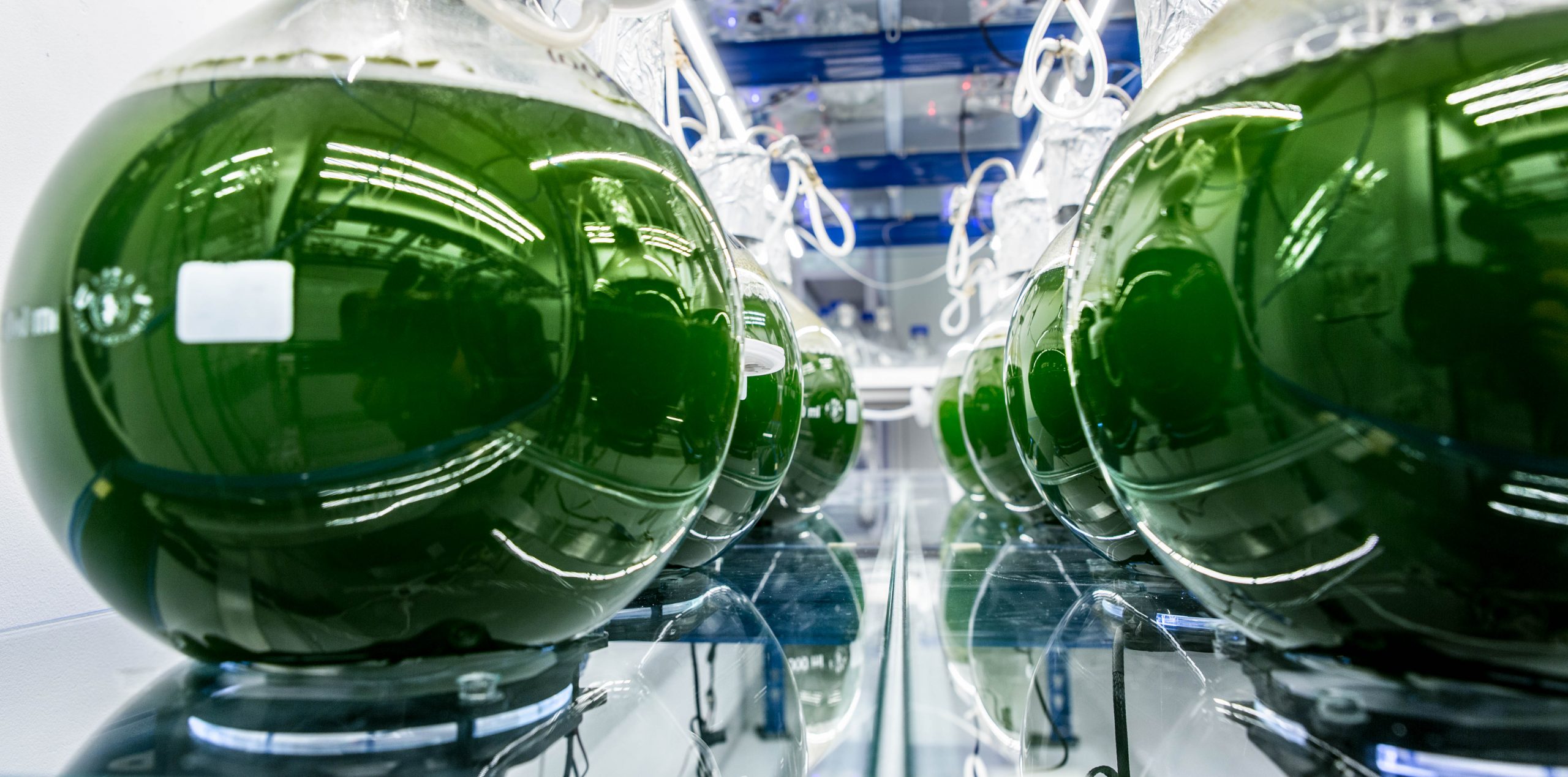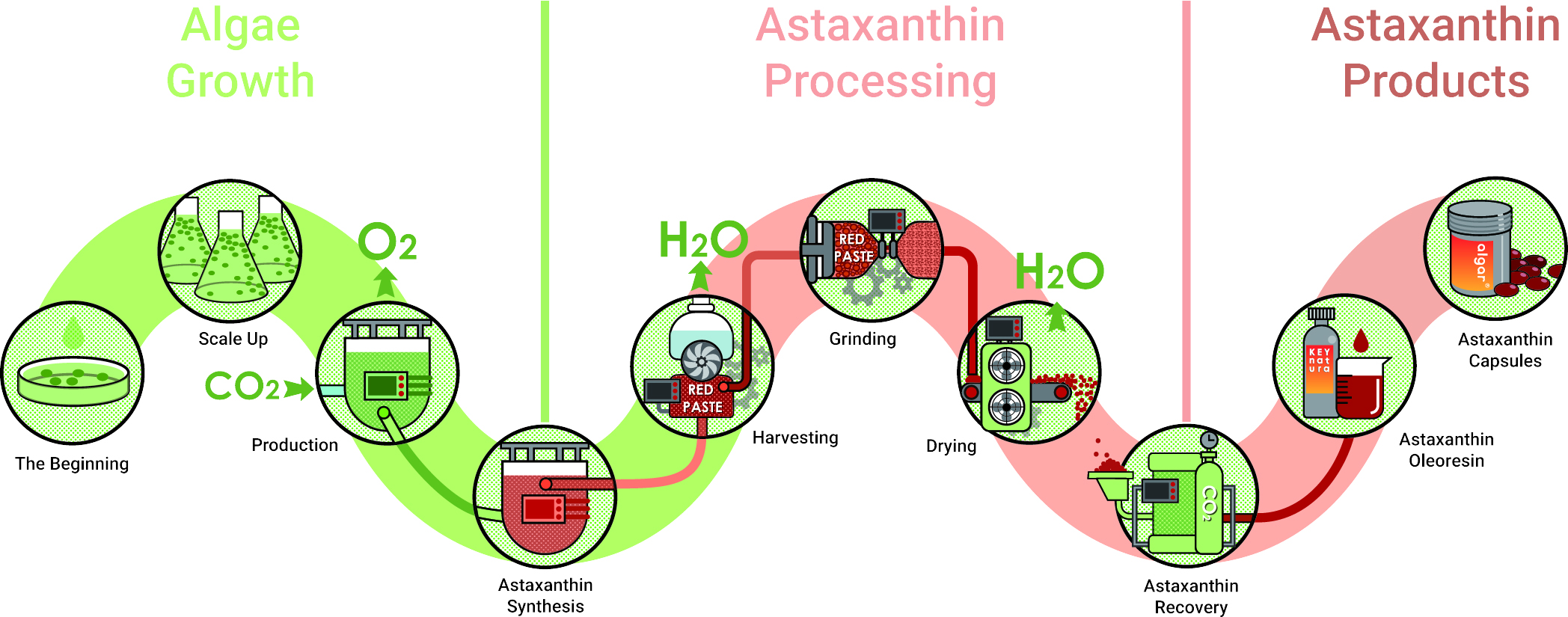Microalgae are an incredible source of nutrients and proteins. These tiny plants at the bottom of the food chain are rich in omega-3 and the powerful antioxidant Astaxanthin.
We use the freshwater microalgae Haematococcus pluvialis to culture and harvest our highly potent natural Astaxanthin, which goes by the name AstaKey™.
What is Astaxanthin?
Pure
Our microalgae thrive in pure Icelandic spring water, nurtured with fresh Icelandic air. The closed-tank system we use, which features our patent-pending photo-bioreactor technology, allows us to clean and sterilise everything thoroughly. No external pollution can enter the tanks either, so the purity of our high quality Astaxanthin is absolute.
Natural
Unlike synthetic options made from petrochemicals, our Astaxanthin is natural, sustainably produced and suitable for use even by those following a vegan diet. A high-quality product, its Icelandic provenance and sustainability credentials add to its natural advantage.
Sustainable
Iceland’s renewable energy is ideal for growing our microalgae sustainably. Our processes help to break down carbon dioxide – our only waste product is oxygen – and the closed-tank technology generates a better yield than other systems. And by using microalgae it means that we don’t endanger stocks of fish and other sea-life, the main alternative source of natural Astaxanthin.
Why Astaxanthin
One of nature’s most powerful antioxidants, Astaxanthin offers numerous health benefits for our bodies.
Skin, muscles, ligaments, tendons, eyes, internal organs, the cardiovascular system and nervous system are all receptive to Astaxanthin, making it uniquely active among antioxidants.

Many studies have investigated the antioxidant effects of Astaxanthin supplements on the human body. A controlled study of overweight adults showed that taking 20 mg of Astaxanthin daily for three months increased the total antioxidant capacity of the blood by 35%. The supplements also raised the levels of superoxide dismutase, one of the body’s main antioxidants, by 30%.
These improvements were associated with a 33% decrease in the circulating levels of malondialdehyde (MDA) and a 59% reduction in the levels of isoprostane (4). Both MDA and isoprostane are indicators of lipid peroxidation, which is the oxidative breakdown of lipids caused by free radicals. Supporting these findings, studies have confirmed that Astaxanthin has a direct effect on lipid peroxidation in cell membranes.
Choose from raw materials and private-label or finished products.
As a vertically-integrated company, we can support you at every level of the value chain.

